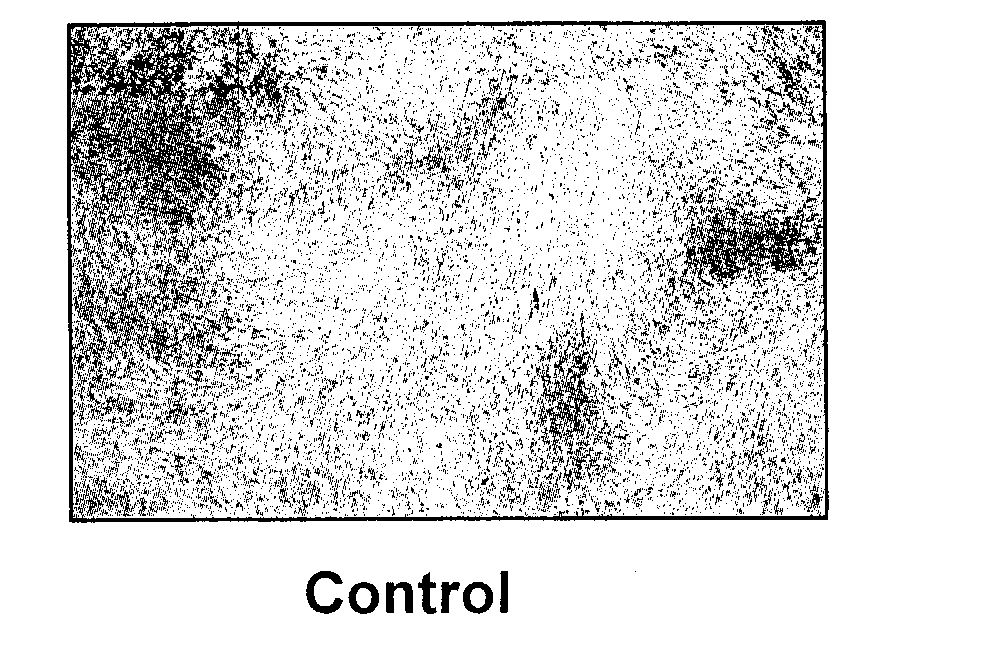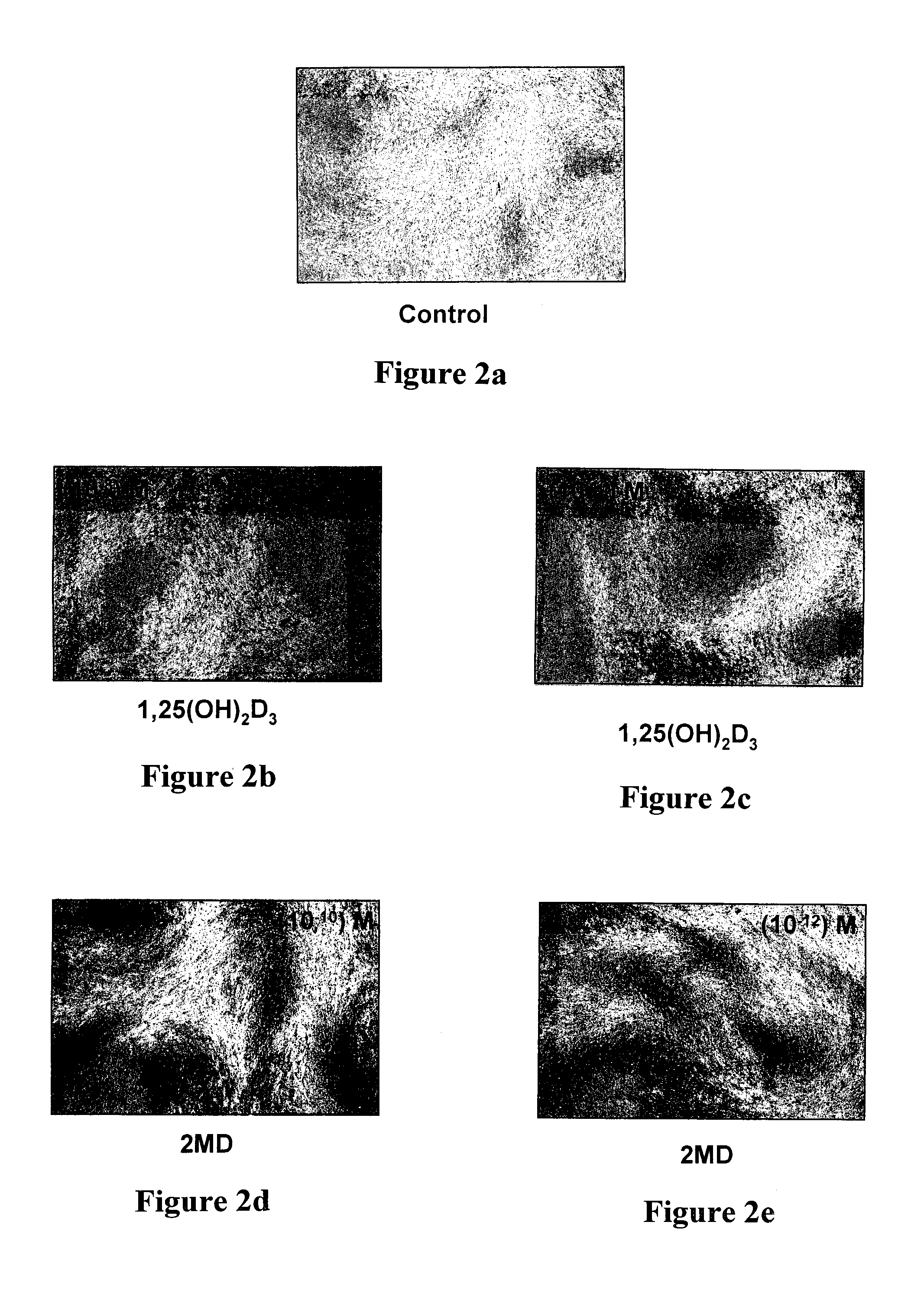Use of Carbon-2-Modified-Vitamin D Analogs to Induce the Formation of New Bone
a technology of vitamin d and carbon dioxide, applied in the field of vitamin d compounds, can solve the problems of fracture rate, increase in bone mass, and insignificant increase in bone mass, and achieve the effects of stimulating new bone growth, stimulating osteoblastic-mediated bone growth, and stimulating new bone growth
- Summary
- Abstract
- Description
- Claims
- Application Information
AI Technical Summary
Benefits of technology
Problems solved by technology
Method used
Image
Examples
example
[0121]Human bone samples discarded after surgical procedures from patients undergoing hip / knee replacement surgeries are obtained under an approved IRB protocol (Protocol #2001-055) and processed as described below. These bone pieces are otherwise routinely discarded as waste material during surgery.
[0122]The bone pieces are thoroughly washed and cleaned under sterile conditions using phosphate-buffered saline (PBS). These pieces are then cut to obtain smaller pieces (1-2 mm3) and subjected to enzymatic digestion process to isolate osteoblasts as described below.
[0123]Osteoblastic cells are obtained from the bone pieces by collagenase digestion. Briefly, the bone samples are washed twice in PBS and dissected in about 1 mm3 size fragments which are then sequentially digested in trypsin (1 mg / mL) for ten minutes, followed by dispase (2 mg / mL) for twenty minutes, and bacterial collagenase [Collagenase A] (3 mg / mL) twice for thirty minutes in PBS at 37° C. in a water bath. Cells release...
PUM
 Login to View More
Login to View More Abstract
Description
Claims
Application Information
 Login to View More
Login to View More - R&D
- Intellectual Property
- Life Sciences
- Materials
- Tech Scout
- Unparalleled Data Quality
- Higher Quality Content
- 60% Fewer Hallucinations
Browse by: Latest US Patents, China's latest patents, Technical Efficacy Thesaurus, Application Domain, Technology Topic, Popular Technical Reports.
© 2025 PatSnap. All rights reserved.Legal|Privacy policy|Modern Slavery Act Transparency Statement|Sitemap|About US| Contact US: help@patsnap.com



